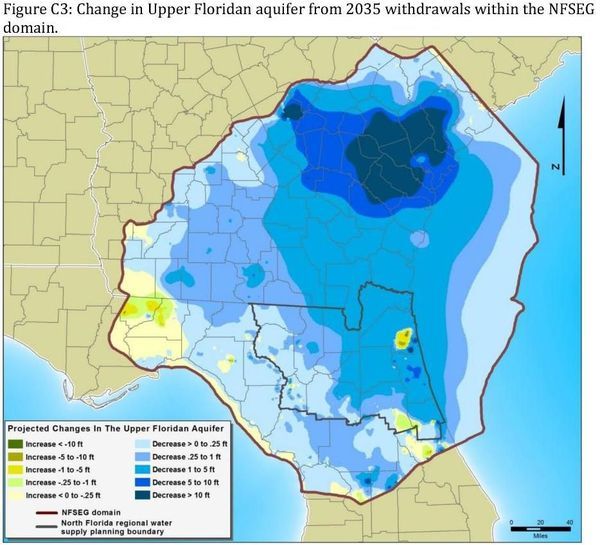The North Central Florida Regional Planning Council had several public speakers cram topics into their three minutes each.
![[Phosphate and Titanium Mines, and Trash @ NCFRPC 2023-01-26]](https://www.wwals.net/pictures/2023-01-26--ncfrpc-pictures/trashmines.jpg)
Phosphate and Titanium Mines, and Trash @ NCFRPC 2023-01-26
Two directly-affected women and Merrillee Malwitz-Jipson, a board member of Our Santa Fe River (OSFR), talked about the Cornerstone Crossings mega development on top of Clay Hole Creek and Cannon Creek confluence, a part of the Ichetucknee Trace, which is in the Southwest quadrant of I-75 and SR 47 Hwy interchange, due south of Lake City in Columbia County, Florida. Merillee wondered about the development’s water withdrawal permit, and how much PFAS it might unleash into the waterways and the underlying Floridan Aquifer. She displayed LiDAR maps she got from SRWMD that clearly show the Ichetucknee Trace. Continue reading

![[Protest and Dragline]](https://www.wwals.net/pictures/2023-01-25--dink-nesmith-okefenokee/many.jpg)
![[Proposed Project Location, 2-MLUP-App-N-b-Modeling-the-Groundwater-Flow-System-on-Trail-Ridge-9-14-2021-Figs-Tables-and-Apps-0012]](https://www.wwals.net/pictures/2023-01-19--ga-epd-tpm-public-comment/big/2-MLUP-App-N-b-Modeling-the-Groundwater-Flow-System-on-Trail-Ridge-9-14-2021-Figs-Tables-and-Apps-0012.jpg)
![[Dragline on TPM mine site 2022-09-27 and Valdosta City Council 2021-11-11]](https://www.wwals.net/pictures/2023-01-01--valdosta-opposes-mine/m2.jpg)
![[Interior Secretary Haaland in the Okefenokee Swamp 2022-09-16 Photo: Shannon Estenoz and U.S. Fish and Wildlife Service]](https://www.wwals.net/pictures/2022-12-07--haaland-okefenokee-mine/Fcz7pgEWYAQVmRN.jpg)
![[Presenters, Commenter]](https://www.wwals.net/pictures/2022-11-15--nfrwsp-videos/many.jpg)
![[Collage]](https://www.wwals.net/pictures/2019-08-01--nfseg/many.jpg)
![[Unite for Clean Water flyer]](https://www.wwals.net/pictures/2022-11-10--rtcw-fl/big/Unite-for-Clean-Water-flyer.jpg)
